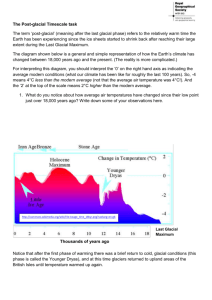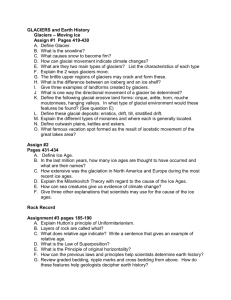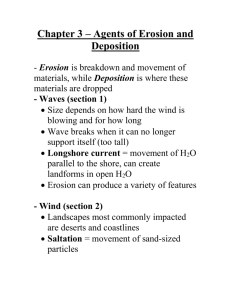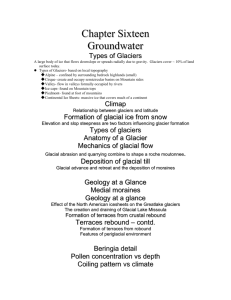Section 7.1 Glaciers
advertisement
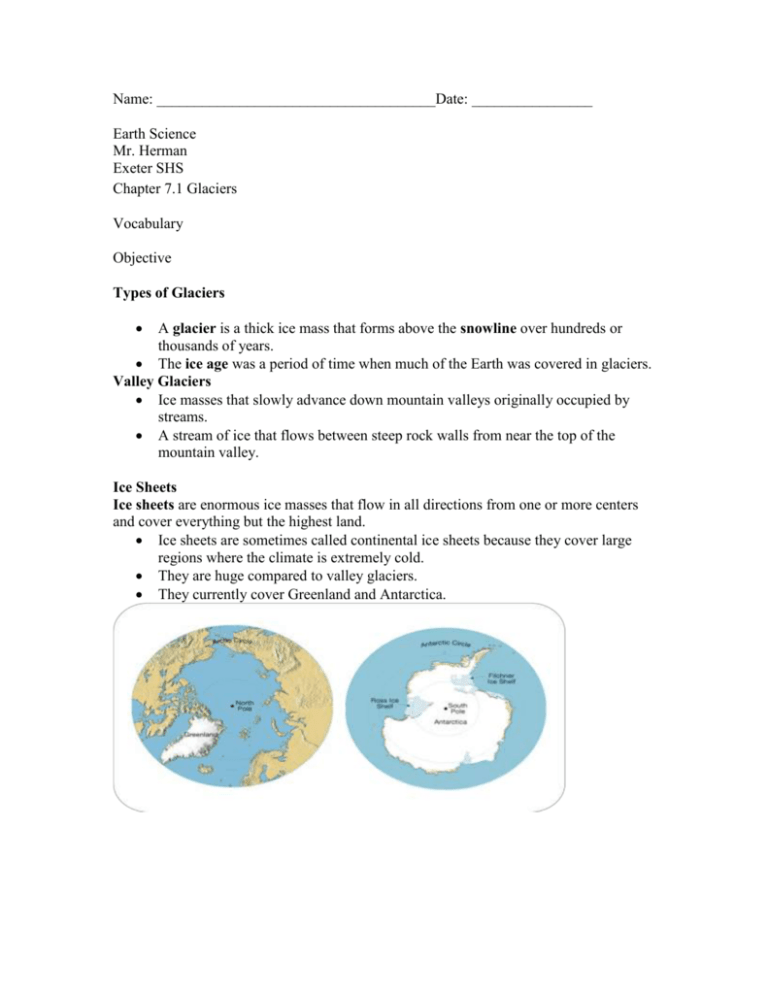
Name: _____________________________________Date: ________________ Earth Science Mr. Herman Exeter SHS Chapter 7.1 Glaciers Vocabulary Objective Types of Glaciers A glacier is a thick ice mass that forms above the snowline over hundreds or thousands of years. The ice age was a period of time when much of the Earth was covered in glaciers. Valley Glaciers Ice masses that slowly advance down mountain valleys originally occupied by streams. A stream of ice that flows between steep rock walls from near the top of the mountain valley. Ice Sheets Ice sheets are enormous ice masses that flow in all directions from one or more centers and cover everything but the highest land. Ice sheets are sometimes called continental ice sheets because they cover large regions where the climate is extremely cold. They are huge compared to valley glaciers. They currently cover Greenland and Antarctica. How Glaciers Move The movement of glaciers is referred to as flow, and it happens in two ways. 1. Plastic flow—involves movement within the ice 2. Basal slip—slipping and sliding downward due to gravity Budget of a Glacier The glacial budget is the balance, or lack of balance, between accumulation at the upper end of a glacier and loss, or wastage, at the lower end. Glacial Erosion Many landscapes were changed by the widespread glaciers of the recent ice age. How Glaciers Erode Plucking—lifting of rock blocks Abrasion Rock flour (pulverized rock) Striations (grooves in the bedrock) Landforms Created by Glacial Erosion Glaciers are responsible for a variety of erosional landscape features, such as glacial troughs, hanging valleys, cirques, arêtes, and horns. Glaciated Valleys A glacial trough is a U-shaped valley that was once V-shaped but was deepen by a glacier. Landforms Created by Glacial Erosion A cirque is a bowl-shaped depression at the head of a glacial valley. Arêtes and Horns • Snaking, sharp-edged ridges called arêtes and sharp pyramid-like peaks called horns project above mountain landscapes. Glacial Deposits Types of Glacial Drift Glacial drift applies to all sediments of glacial origin, no matter how, where, or in what form they were deposited. There are two types of glacial drift. Till is material deposited directly by the glacier. Stratified drift is sediment laid down by glacial meltwater. Moraines, Outwash Plains, and Kettles Glaciers are responsible for a variety of depositional features, including Moraines—layers or ridges of till Lateral Medial End Terminal end Recessional end Ground Glaciers are responsible for a variety of depositional features, including • outwash plains—sloping plains consisting of deposits from meltwater streams in front of the margin of an ice sheet • kettles—depressions created when a block of ice becomes lodged in glacial deposits and subsequently melts • drumlins—streamlined, asymmetrical hills composed of glacial dirt • eskers—ridges composed largely of sand and gravel deposited by a stream flowing beneath a glacier near its terminus Glaciers of the Ice age Ice Age • Began 2 to 3 million years ago • Division of geological time is called the Pleistocene epoch • Ice covered 30% of Earth's land area. • Greatly affected drainage


